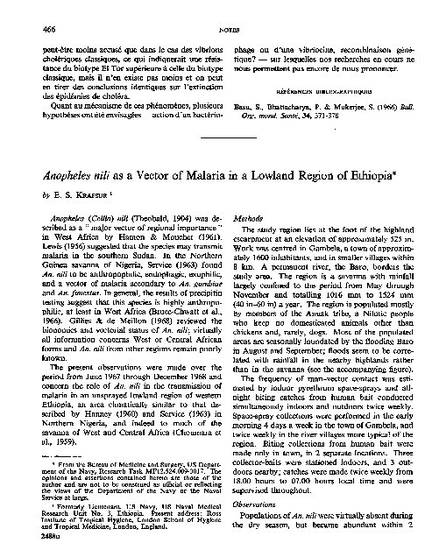
Article
Anopheles nili as a Vector of Malaria in a Lowland Region of Ethiopia
Bulletin of the World Health Organization
(1970)
Abstract
Anopheles (Cellia) nili (Theobald, 1904) was described as a " major vector of regional importance " in West Africa by Hamon & Mouchet (1961). Lewis (1956) suggested that the species may transmit malaria in the southern Sudan. In the Northern Guinea savanna of Nigeria, Service (1963) found An. niii to be anthropophilic, endophagic, exophilic, and a vector of malaria secondary to An. gambiae and An. funestus. In general, the results of precipitin testing suggest that this species is highly anthropophilic, at least in West Africa (Bruce-Chwatt et al., 1966). Gillies & de Meillon (1968) reviewed the bionomics and vectorial status of An. nili; virtually all information concems West or Central African forms and An. nili from other regions remain poorly known.
Disciplines
Publication Date
1970
Publisher Statement
Works produced by employees of the U.S. Government as part of their official duties are not copyrighted within the U.S. The content of this document is not copyrighted.
Citation Information
E. S. Krafsur. "Anopheles nili as a Vector of Malaria in a Lowland Region of Ethiopia" Bulletin of the World Health Organization Vol. 42 Iss. 3 (1970) p. 466 - 471 Available at: http://works.bepress.com/elliot-krafsur/51/
